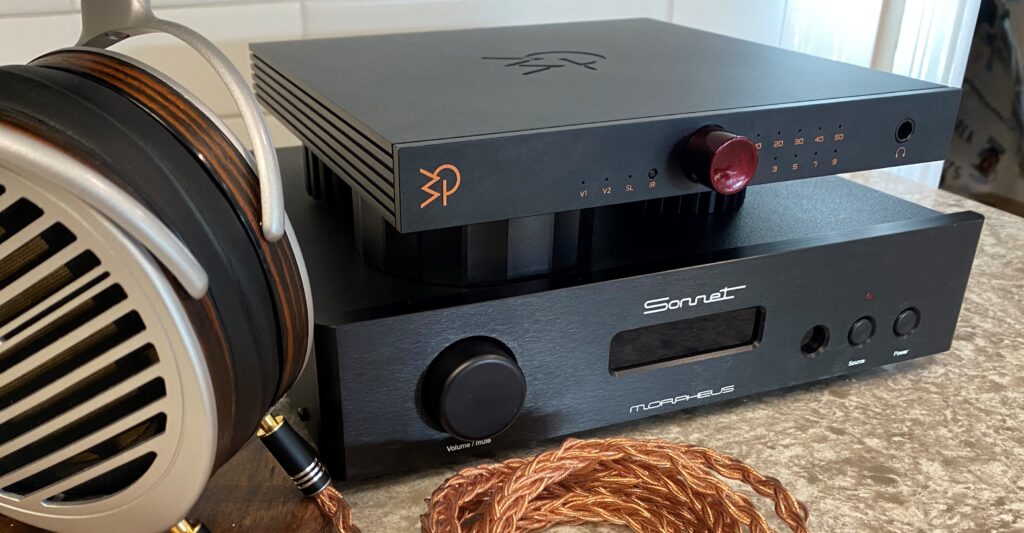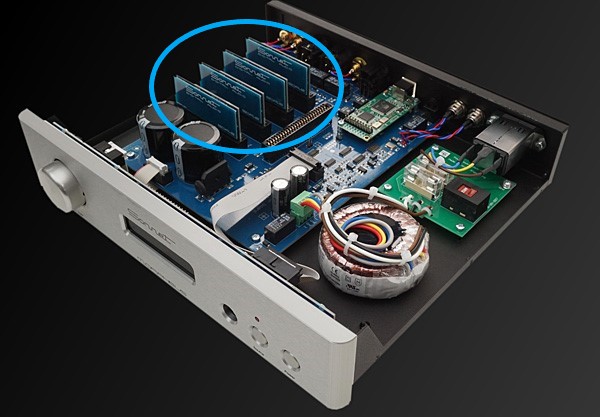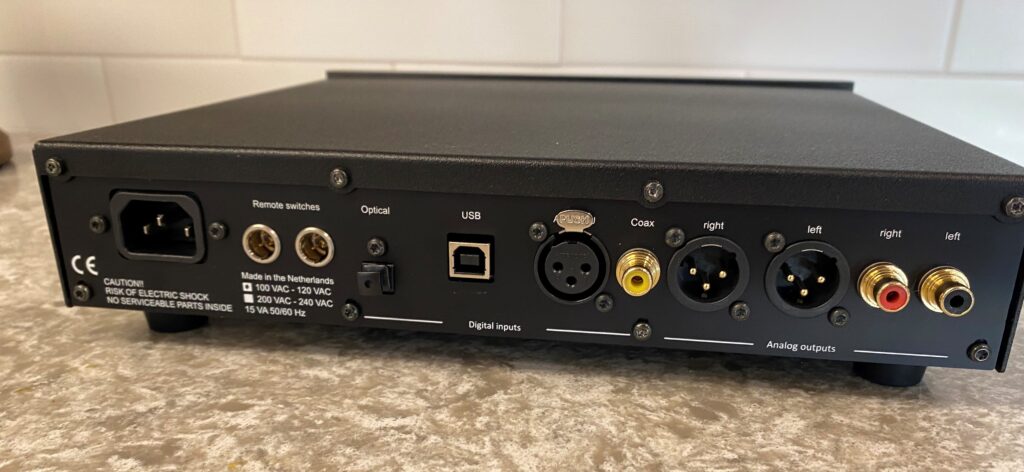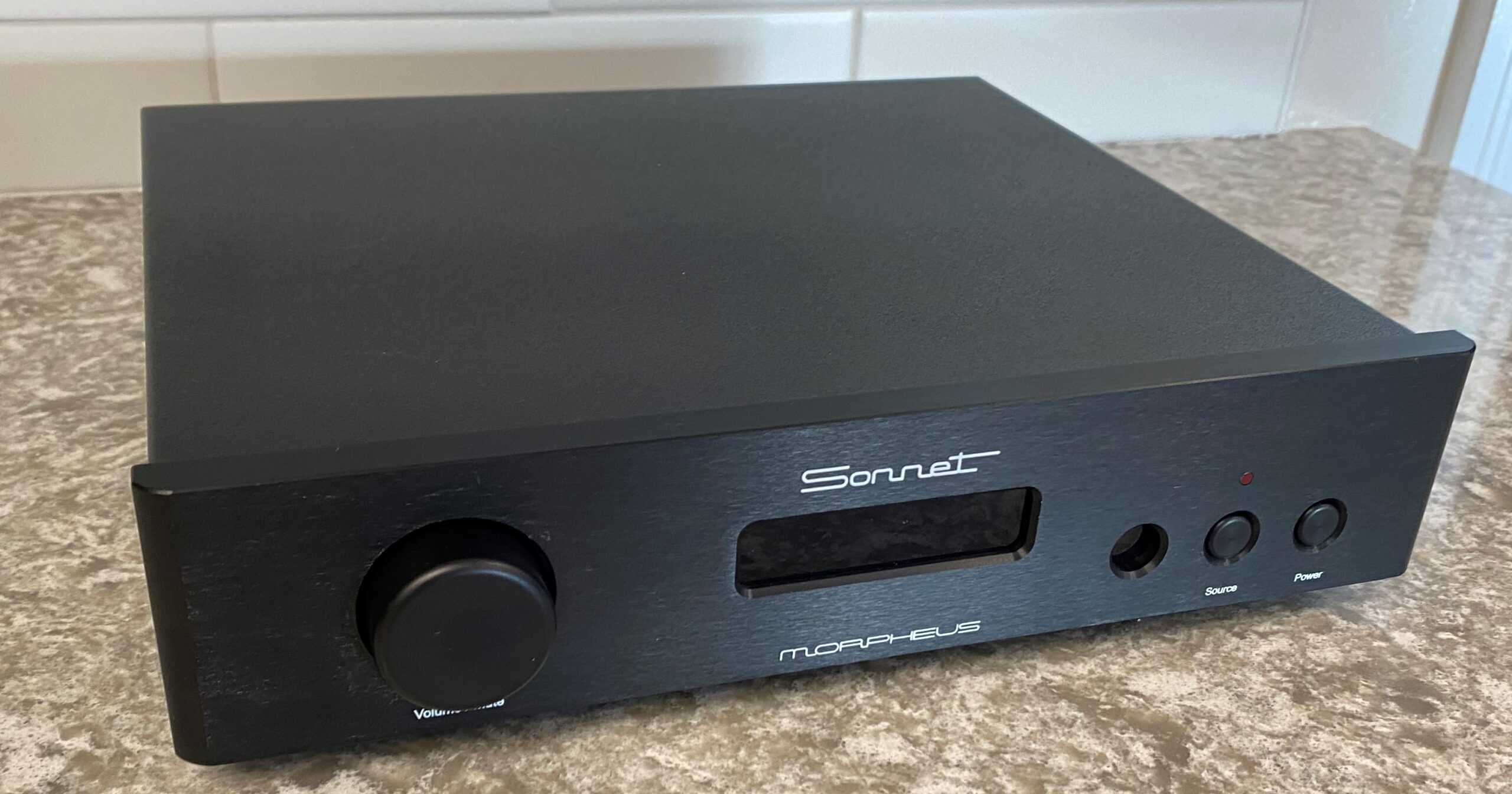The Good
Relaxed, nuanced presentation.
Organic-ness and natural sounding texture.
The Bad
Relaxed presentation may seem uninteresting when paired with very relaxed amps.
No DSD support (if you actually care).
Proprietary I2S connection only works with the Sonnet’s Hermes Streamer.
Equipment Used
PC -> Matrix Audio X-spdif DDC via AES -> Sonnet Morpheus DAC -> Bakoon 13r -> Susvara, Abyss 1266 TC and Fostex TH-900 Pearl

About Sonnet Digital Audio
The Sonnet Morhpeus is a non-oversampling R2R D/A converter designed by Cees Ruijtenberg, formerly and currently of Metrum Acoustics. I’ll leave it to the reader to learn the whole saga but here’s the short version: Ruijtenberg left Metrum over a management dispute and founded Sonnet Digital Audio. Sonnet continued Metrum’s NOS, upgradeable R2R direction without missing a beat. Cees is now back at the helm at Metrum but both brands seem to be moving forward as stand-alone companies.
The Morpheus is the “entry level” dac in the Sonnet Line with a MSRP of $3399. Sonnet recently revealed a Flagship DAC called Pasithea, available late January at a MSRP of $5,520. The Morpheus competes in the $2,500-$5,000 “Upper High End Tier,” competing with the XI Audio Sagra, Lampizator Amber 3 and the La Voce by Aqua among others. I am reviewing my own unit bought in November.
Under the Hood
The Morpheus utilizes four Sonnet developed SDA-2 R2R modules in a clever configuration that utilizes the best portion of each R2R chip, leaving the worst portions unutilized. My last STEM education was freshman calculus, so bear with me through tech details [deep breath]…Each SDA-2 contains two 20 bit R2R ladders and one field programmable gate array (FPGA) per module. In order to achieve full 24bit decoding, the Morpheus contains eight 20-bit modules. It achieves 24 bit resolution by splitting DA conversion duties across two R2R ladders, but utilizing only the quietest 12 bits of each module (leaving the nosiest part of each R2R ladder unused). The Morpheus then stitches the two 12-bit signals back together with a custom FPGA to create the full 24 bit signal (whew).
According to Ruijtenberg, using the best portion of each ladder module results in very low noise, while avoiding pitfalls such as switching noise. These modules are inserted into the DAC PCB “motherboard” upright like PC RAM, and are user upgradeable when Sonnet develops new D/A tech.

Feature wise, the Morpheus has the standard I/O; digital inputs over optical, coaxial, AES/EBU and USB and analog output over RCA and XLR. Also on the back are remote switches to connect with other Sonnet components. You can choose between a USB module and RJ45/I2S module, but not both. The R45/I2S connection is proprietary and can only be used Sonnet Hermes (though creating your own cable utilizing the Hermes pinout is possible). Also available is an optional MQA module, giving a choice of supporting the MQA format. This is a welcome to this Qobuz subscriber, and I wish more manufacturers followed suit.

The Morpheus does not decode DSD at all. While I find DSD an intriguing idea, I have not missed DSD capability at all. The reality is my 12,133 track music library only contains 32 DSD tracks.
One last innovation worth mentioning is the volume control. Rather than an inherently problematic potentiometer, a costly stepped attenuator, or bit robbing digital volume, the Morpheus adjusts voltage directly from the DA chips themselves. Sonnet claims linear volume control down to -140db. While I did not test this feature, the ability to drive a power amp directly from the Morpheus is intriguing and seems largely unexplored by the community.
Sound
I purchased the Morpheus as a tweak/side grade from the XI Sagra Dac so that is my primary frame of reference for the Morpheus. I am also very familiar with the Soekris 2541 and 1541, Schiit Bifrost 2, Airist R2R and (deal with it) the Topping D90.
Smoothness, organicness and texture are absolutely amazing. I cannot say enough about the depth and organic realism conveyed by this DAC. Unlike how grip, control or soundstage can impress on the first listen, organic texture is more nuanced, but gives music a lifelike feel that you need to hear to believe. This is the strongest attribute of this DAC, and I have found listening more rewarding over the long term with this DAC than any other DAC I have experienced.
Stage and overall holography was also improved over the Sagra and Soekris 2541, though only slightly. I’ve heard Lampizator owners wax poetic about space and stage, and I’m not so inspired here. This is still a relatively neutral, forward, presentation.
Speed and separation and control/grip are very good, and on par with the Sagra DAC. I don’t perceive any attack and decay overshoot or general flabbiness. Unlike the macrodynamic slam and punch of the Sagra, the Morpheus is more even and neutral. Not really un-impactful, but certainly more neutral in this area. Background seems black and without overt noise.
Overall tonality is neutral to neutral-warm, but in no way dark or bass forward. Reputable sources over at SBAF have measured the frequency response flat, then gently declining 4 dB from 10kHz to 20kHhz. With my 46 year old hearing, I cannot detect any lack in this very high register- if I’m lucky my hearing probably peters out at 16-18k anyway. However it may impact overall brilliance and sparkle, and might even contribute to the overall relaxed presentation.
Conclusion
The Sonnet Morpheus is a very natural, relaxed and relaxing listen; and pairs wonderfully with my Bakoon 13R. The overall presentation is effortless, refined and nuanced. It has been rewarding my attention in small and large ways since I bought it in November. Can heartily recommend this DAC for those looking for a textured, organic, and life like experience.
Thoughts? Comments? Continue the conversation here!
Andy is a mid level, mid life, hifi enthusiast from Northern California. When he’s not listening to music he can be found exploring the California coastline, reading cheesy science fiction, or doing whatever his wife and two daughters tell him.
